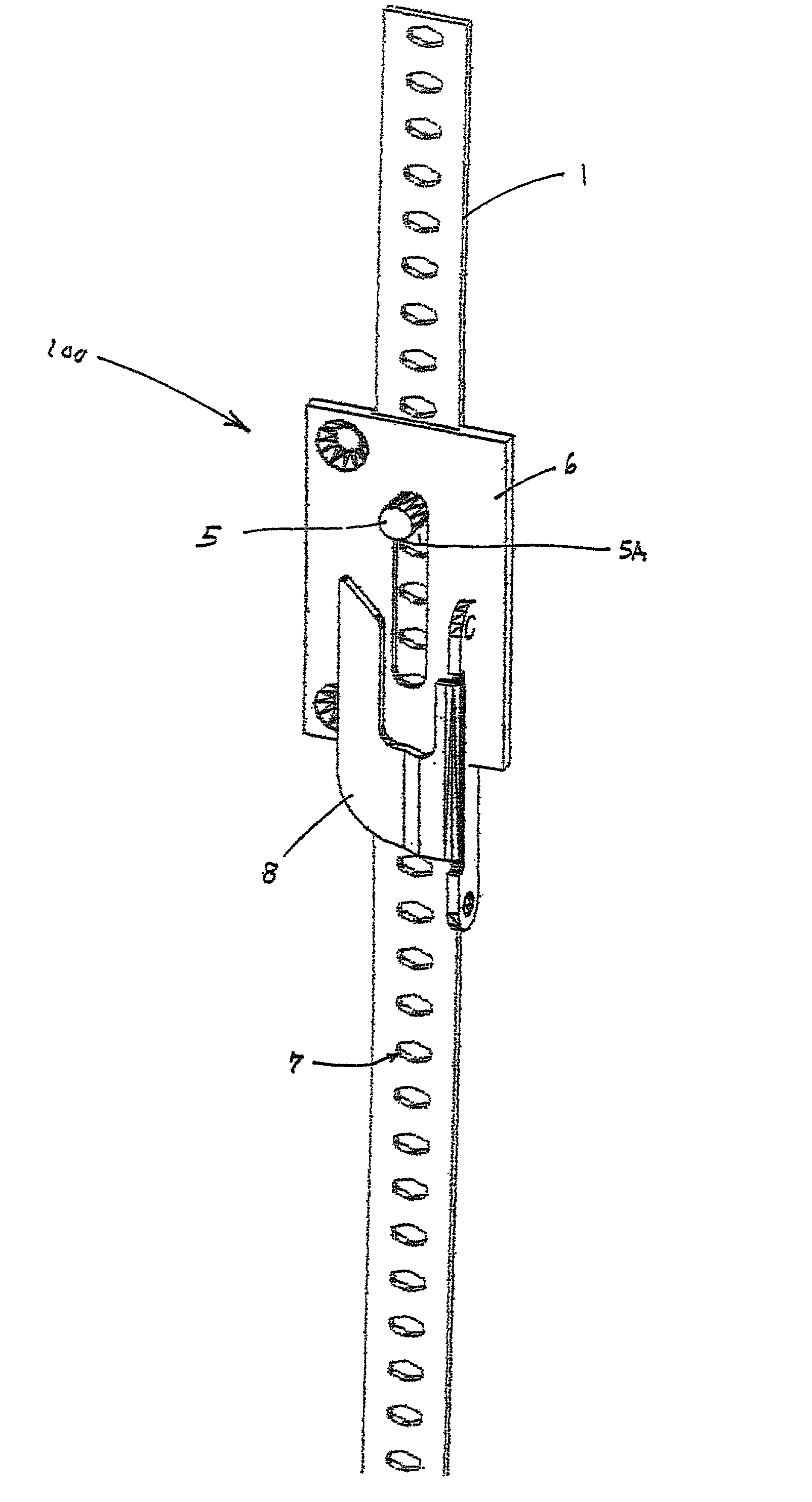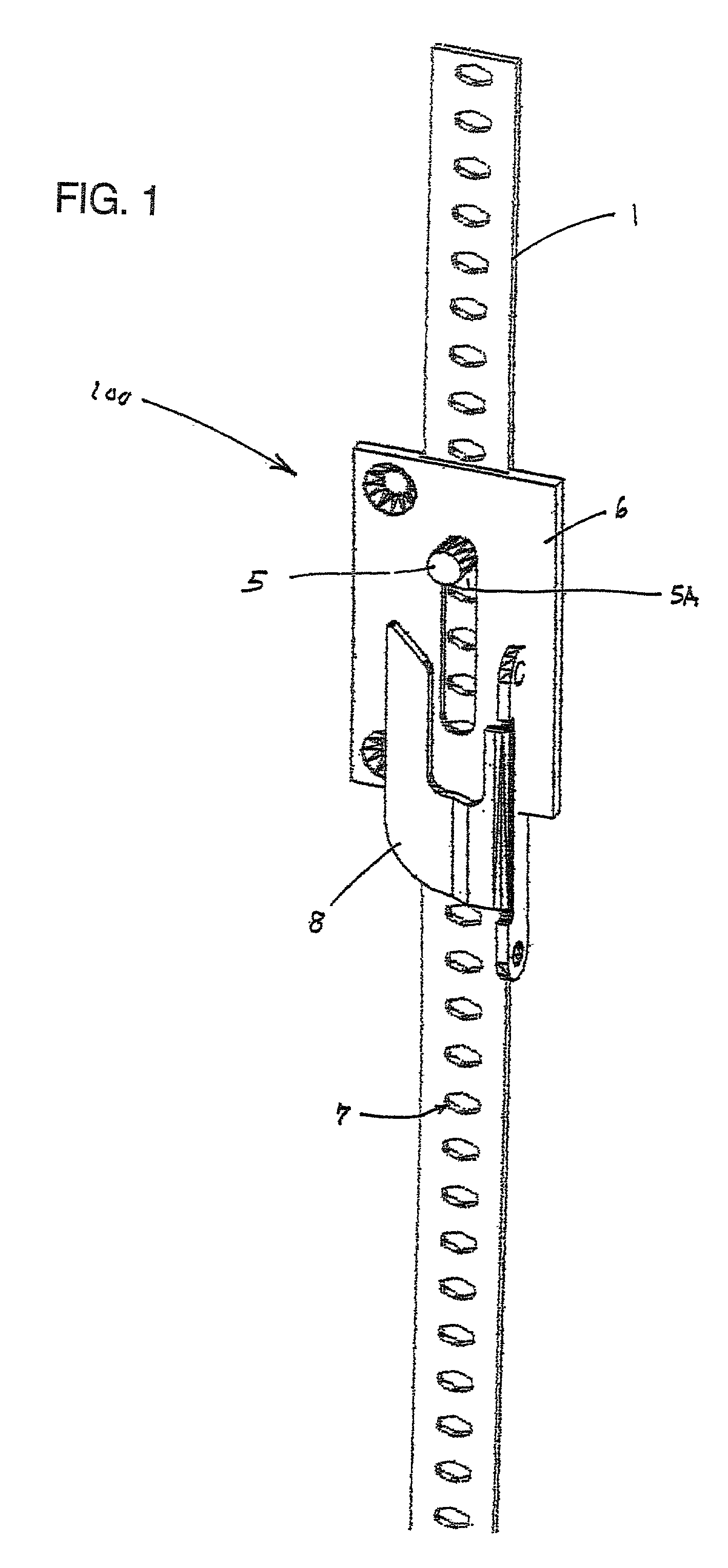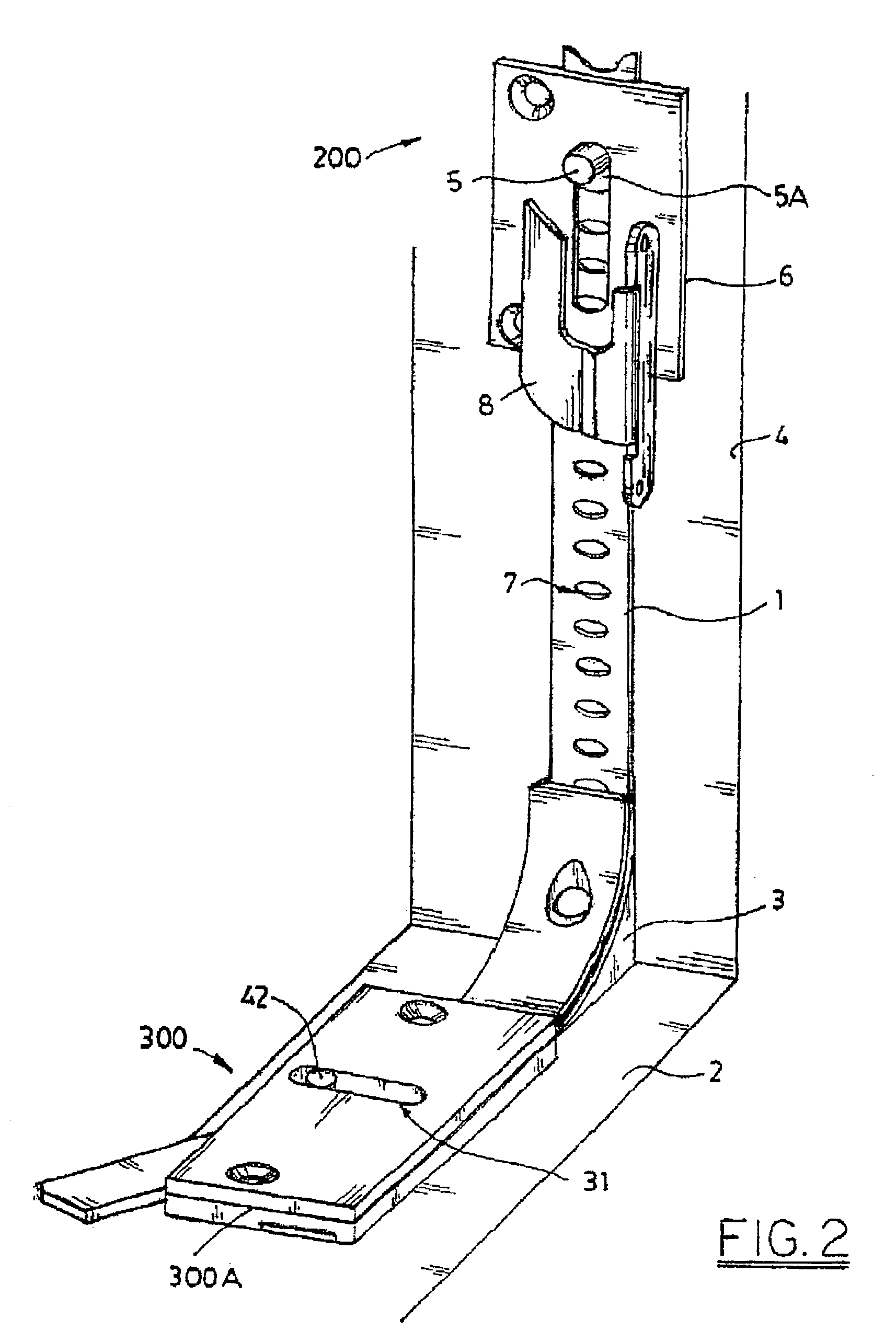Fenestration locking system
a locking system and fenestration technology, applied in the direction of carpet fasteners, mechanical controls, gearing, etc., can solve the problem of slipping into the edge of the frame, and achieve the effect of reducing mechanical advantages, avoiding permanent connections, and simplifying the installation of pins
- Summary
- Abstract
- Description
- Claims
- Application Information
AI Technical Summary
Benefits of technology
Problems solved by technology
Method used
Image
Examples
Embodiment Construction
[0048]Tape 1 serves as the flexible push-pull member in my design. It starts at a locking lever assembly (denoted generally by arrow 300). In the embodiments of my invention illustrated in FIGS. 1 through 4B, locking lever assembly 300 is mounted on a windowsill 2 or at other locations on the frame (or perimeter) of a fenestration opening. Tape 1 can extend to as many locking pin assembly locations as desired. These could be placed all the way around the perimeter of a fenestration opening (e.g.—all the way around a window or doorframe). In most cases, however, a swinging sash or door will require only the installation of an upper locking pin assembly (denoted generally by arrow 100) and a lower locking pin assembly (denoted generally by arrow 200) on frame 4 in order to ensure that the sash or door is securely fastened when closed. Thus, in the preferred embodiments illustrated in FIGS. 1 through 3, tape 1 extends around the corner of a window frame via corner bracket 3 and upward ...
PUM
 Login to View More
Login to View More Abstract
Description
Claims
Application Information
 Login to View More
Login to View More - R&D
- Intellectual Property
- Life Sciences
- Materials
- Tech Scout
- Unparalleled Data Quality
- Higher Quality Content
- 60% Fewer Hallucinations
Browse by: Latest US Patents, China's latest patents, Technical Efficacy Thesaurus, Application Domain, Technology Topic, Popular Technical Reports.
© 2025 PatSnap. All rights reserved.Legal|Privacy policy|Modern Slavery Act Transparency Statement|Sitemap|About US| Contact US: help@patsnap.com



